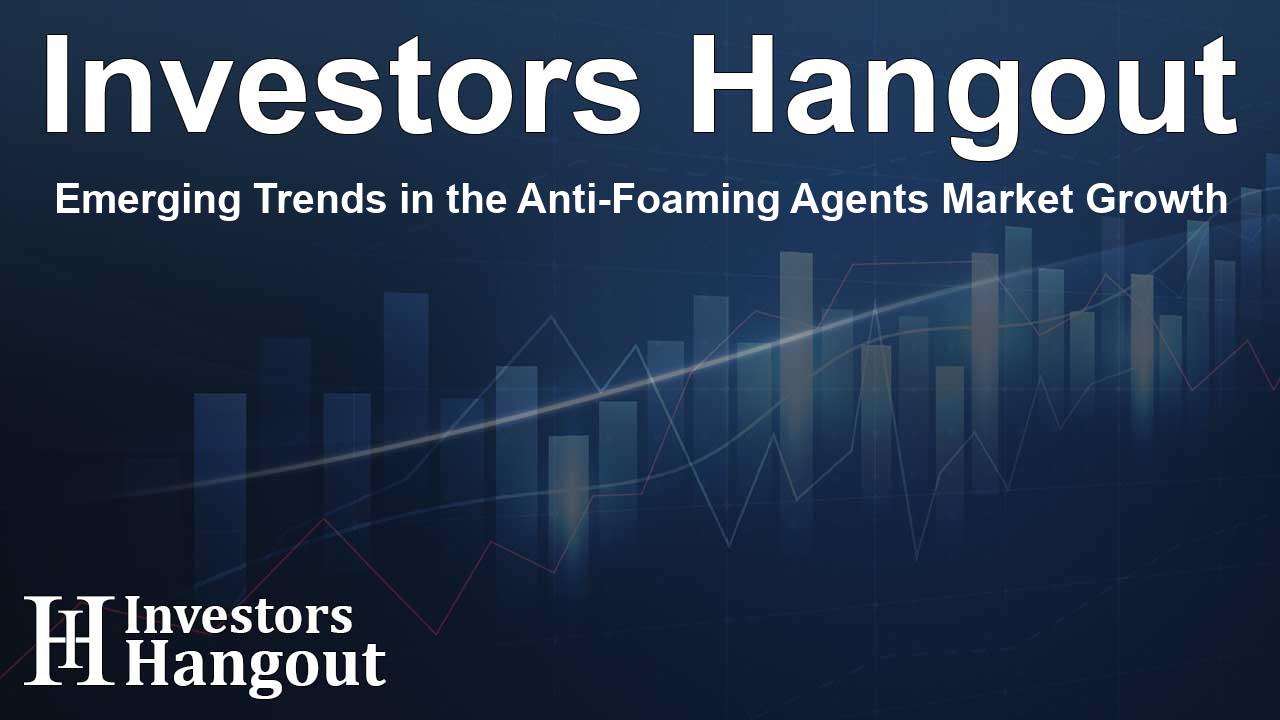Emerging Trends in the Anti-Foaming Agents Market Growth

Future Prospects of the Anti-Foaming Agents Market
The global market for anti-foaming agents is witnessing a remarkable transformation. With an anticipated value of USD 2,523.2 million by 2034, this market is primed for considerable growth. Analysts predict a compound annual growth rate (CAGR) of 4.6% from 2024 to 2034, reflecting increasing complexities and demands across various industrial sectors.
Understanding Anti-Foaming Agents
Anti-foaming agents, also known as defoamers, play a crucial role in various industrial processes by reducing foam formation. Their application is vital for enhancing operational efficiency, minimizing downtime, and improving the quality of end products. Industries such as pharmaceuticals, food and beverages, wastewater treatment, and manufacturing are increasingly adopting these agents to tackle foam-related challenges that can hinder productivity.
Rising Demand Across Key Industries
The demand for anti-foaming agents is particularly pronounced in sectors where foam generation is problematic. For example, in the manufacturing sector, excessive foam can disrupt production lines and lead to costly downtimes. As a result, companies are prioritizing the integration of defoamers to enhance their production processes.
The Role of Food and Beverages
In the food and beverage industry, anti-foaming agents are essential in processing and packaging to ensure consistency and quality. The rapid growth of this sector, especially in emerging markets, is significantly driving the demand for food-grade defoamers. As manufacturers seek to maintain product quality in the face of rising consumption, anti-foaming agents will remain a critical component in their operations.
Market Drivers and Innovations
Several key drivers are contributing to the expansion of the anti-foaming agents market. The ongoing trends of urbanization and increasing industrialization are fueling the need for advanced water treatment systems, where these agents are indispensable. Moreover, the pharmaceutical sector's reliance on effective defoamers during drug formulations adds to the market's growth potential.
Technological Advancements
Continuous innovation and technological advancements in the formulation of anti-foaming agents are noteworthy. Companies are investing in research and development to create eco-friendly and biodegradable options that align with stricter environmental regulations. This forward-thinking approach is essential in earning consumer trust and meeting industry standards.
Competitive Landscape and Key Players
The competitive landscape of the anti-foaming agents market is dynamic, featuring a blend of major corporations and specialized firms. Industry leaders are focusing on strategic partnerships and acquisitions to expand their market influence and share innovative technologies. Established companies remain pivotal in determining market trends and setting standards for product effectiveness.
Insights into Leading Brands
Key players in this market include Hangzhou Ruijiang Chemical Co. Ltd, Ecolab, and Dow Chemicals. These firms are recognized for their commitment to innovation and sustainability, propelling the anti-foaming agents market toward new heights. Through collaboration and technological synergy, they are shaping the future of defoamers.
Market Dynamics by Region
Regional analysis indicates that the Asia Pacific region is emerging as a significant market hub, driven by rapid industrialization, particularly in countries like China and India. The demand for anti-foaming agents is skyrocketing in several key applications, including manufacturing and wastewater management, highlighting the importance of these solutions in global markets.
Frequently Asked Questions
What factors are driving the growth of the anti-foaming agents market?
The growth is driven by urbanization, increased industrial applications, and the rising demand for efficient water treatment solutions across various sectors.
How significant is the food and beverages sector for anti-foaming agents?
The food and beverages sector is crucial, as anti-foaming agents are essential for maintaining product quality and consistency during food processing and packaging.
What key innovations are shaping this market?
Recent innovations focus on eco-friendly formulations and biodegradable products, addressing environmental concerns while enhancing performance.
Which regions are expected to see the fastest growth in anti-foaming agents?
The Asia Pacific region is projected to experience the fastest growth due to its rapid industrialization and increasing demand in manufacturing sectors.
Who are the leading companies in the anti-foaming agents market?
Leading companies include Hangzhou Ruijiang Chemical Co. Ltd, Ecolab, and Dow Chemicals, known for their innovative and sustainable practices in the market.
About Investors Hangout
Investors Hangout is a leading online stock forum for financial discussion and learning, offering a wide range of free tools and resources. It draws in traders of all levels, who exchange market knowledge, investigate trading tactics, and keep an eye on industry developments in real time. Featuring financial articles, stock message boards, quotes, charts, company profiles, and live news updates. Through cooperative learning and a wealth of informational resources, it helps users from novices creating their first portfolios to experts honing their techniques. Join Investors Hangout today: https://investorshangout.com/
Disclaimer: The content of this article is solely for general informational purposes only; it does not represent legal, financial, or investment advice. Investors Hangout does not offer financial advice; the author is not a licensed financial advisor. Consult a qualified advisor before making any financial or investment decisions based on this article. The author's interpretation of publicly available data shapes the opinions presented here; as a result, they should not be taken as advice to purchase, sell, or hold any securities mentioned or any other investments. The author does not guarantee the accuracy, completeness, or timeliness of any material, providing it "as is." Information and market conditions may change; past performance is not indicative of future outcomes. If any of the material offered here is inaccurate, please contact us for corrections.